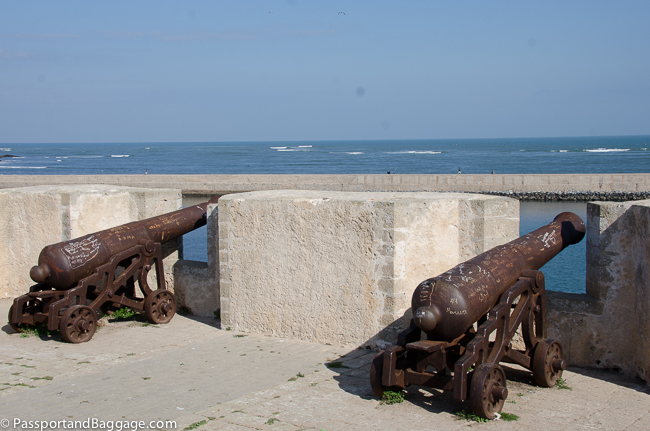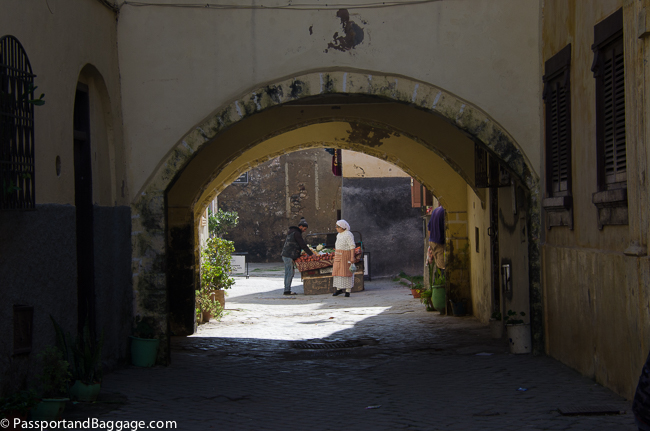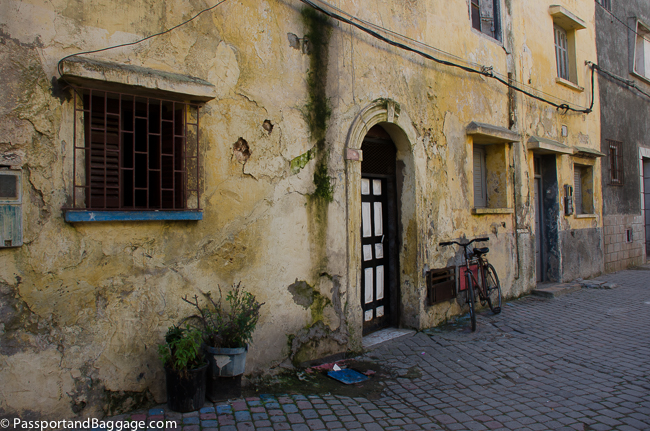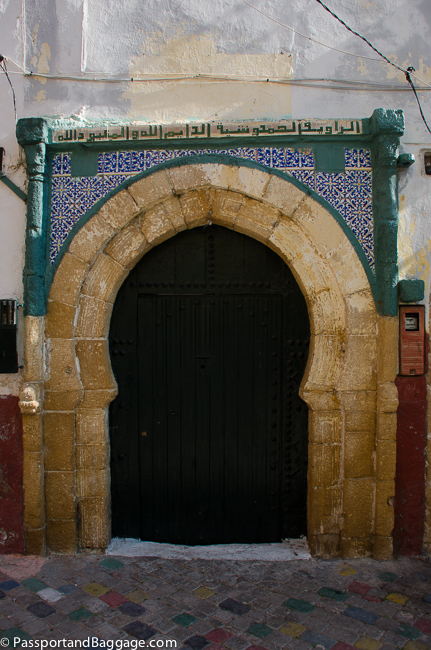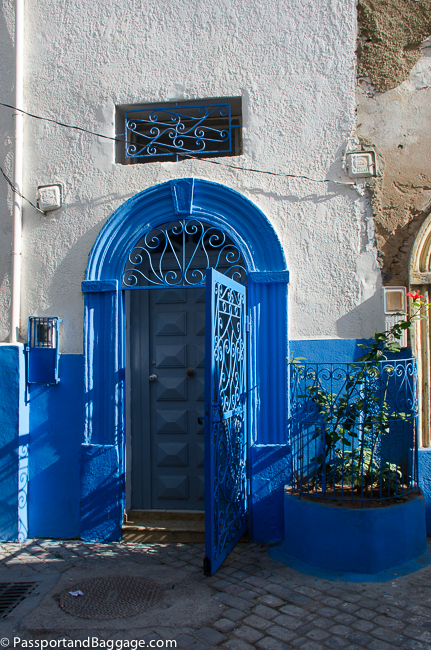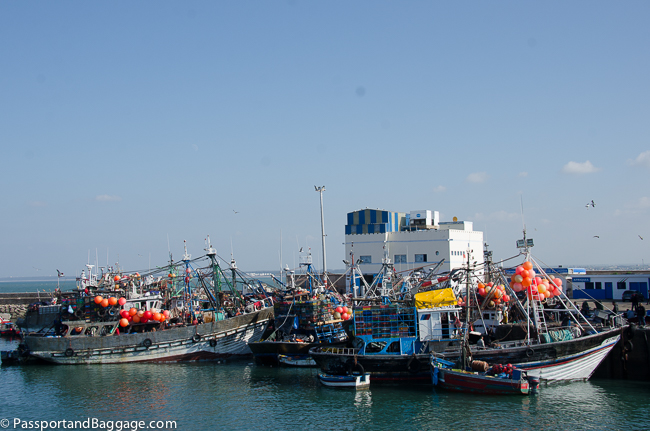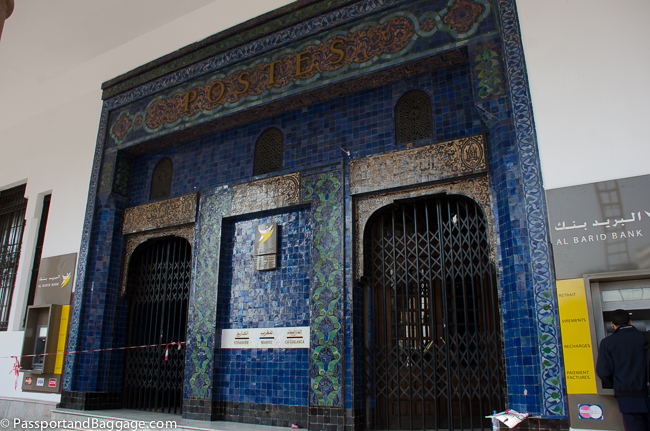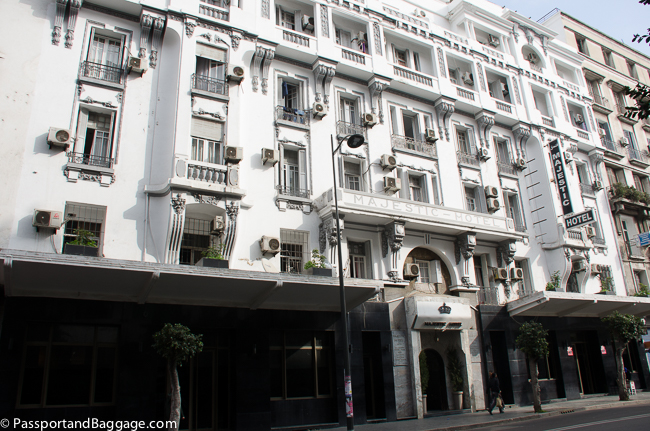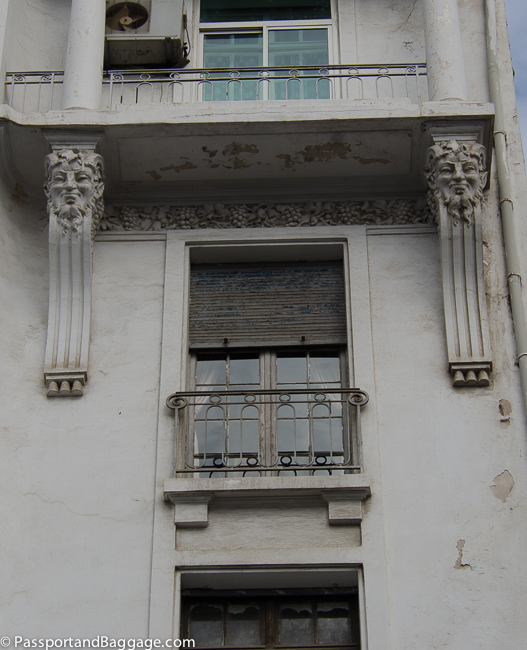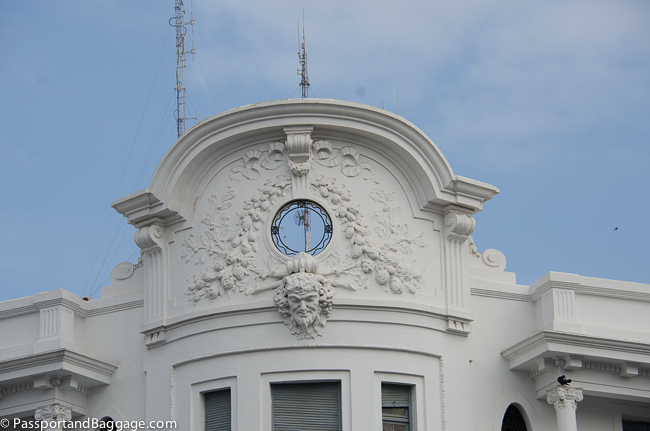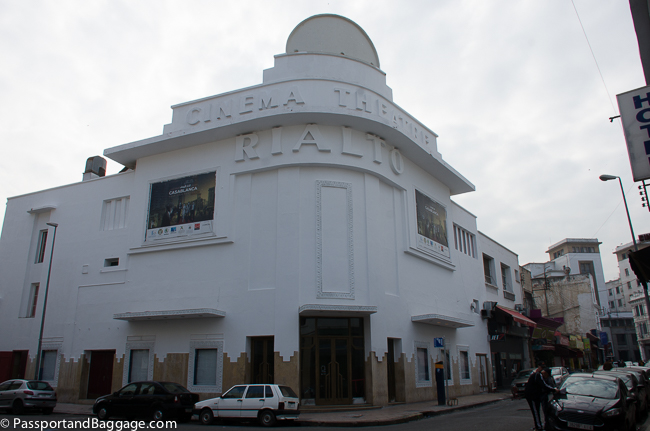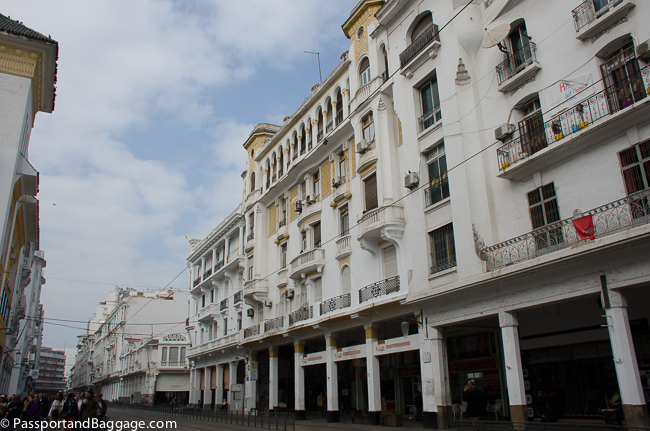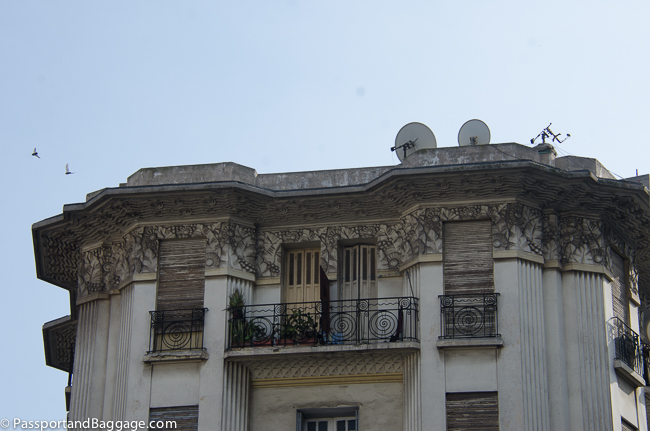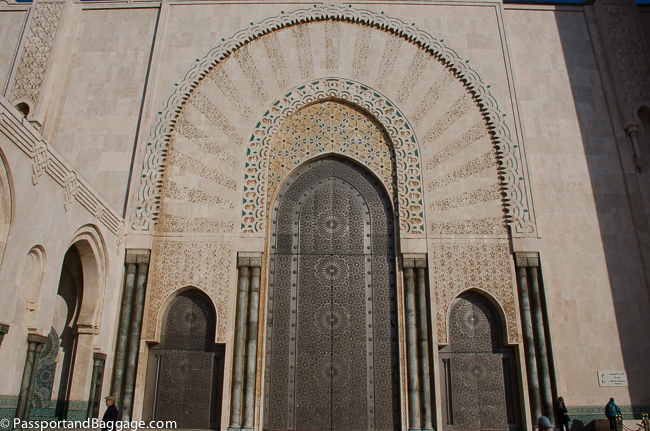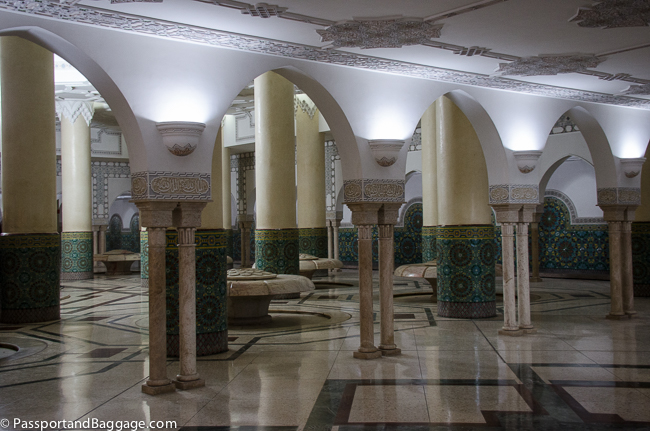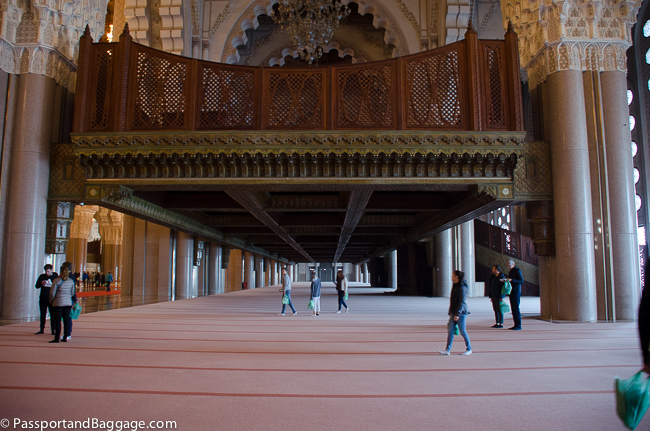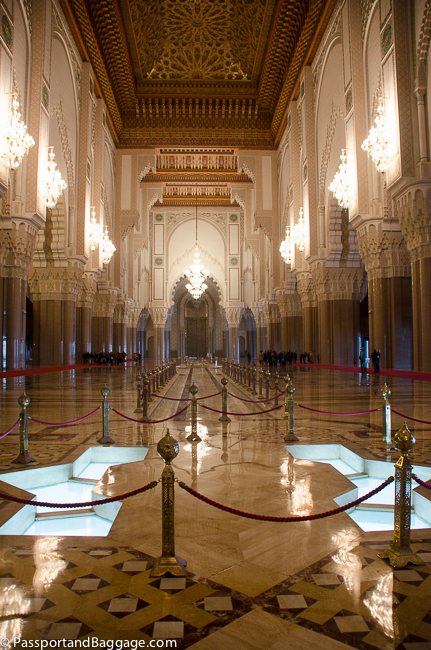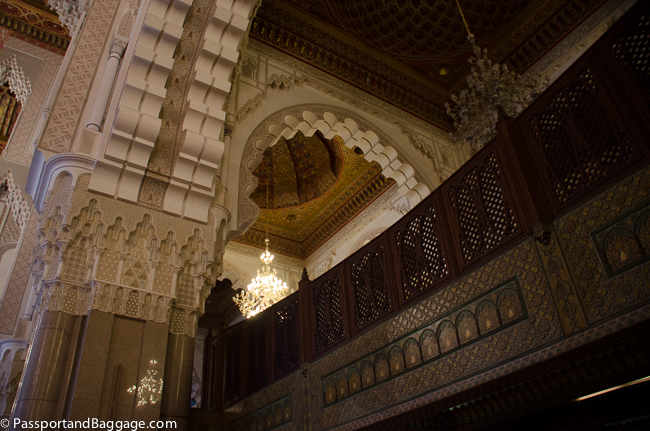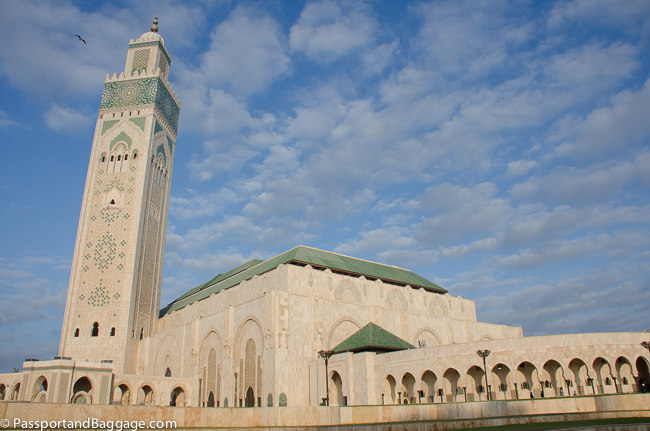January 5, 2020
El Jadida
A one and one-half hour train ride from Casablanca is El Jadida. Within the city of El Jadida is the small town of Mazagan, founded in 1506. Considered one of the Severn Wonders of Portuguese Origin in the World, Mazagan was registered as a UNESCO World Heritage Site in 2004, on the basis of its status as an “outstanding example of the interchange of influences between European and Moroccan cultures” and as an “early example of the realization of the Renaissance ideals integrated with Portuguese construction technology”.
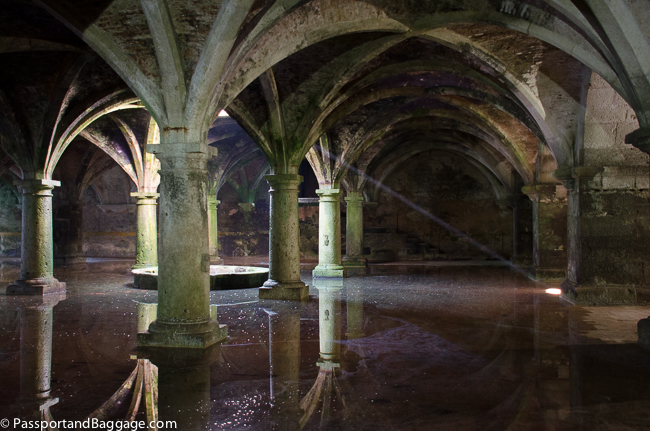
The cistern is famous especially for the thin layer of water that covers the floor, and which creates ever-changing reflections from the little light that pours in from the skylight and the beautiful shapes of the columns and the roof.
The cistern, the number one reason to visit the town, was built under the fortified town in 1541 by the Portuguese. It first served as an armory before being transformed into a rainwater reserve to provide water during the Arab sieges. Eventually, it was simply forgotten, and then in 1916, a merchant discovered it when attempting to expand his shop. There are 6 naves, 25 columns and a skylight in the center.
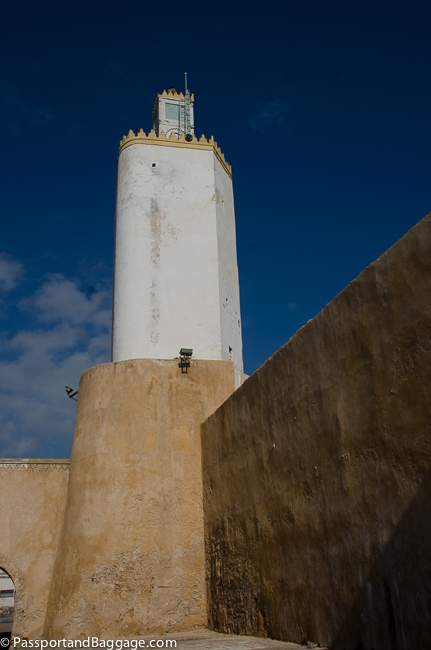
The odd shape of the 19th-century Mosque is due to the fact that it was originally the Torre de Rebate which was originally part of the cistern.
A wander around the town:
The town sits on the water and there are fish markets with restaurants attached serving wonderfully fresh fish.
Casablanca
Casablanca is Morocco’s biggest city and its commercial capital. Casablanca was founded and settled by Berbers by at least the seventh century BCE. It was used as a port by the Phoenicians and later the Romans.
In the early 15th century the town emerged as a safe harbor for pirates and privateers, leading to it being targeted by the Portuguese, who bombarded the town, destroying it in 1468. They used the ruins of the town to build a military fortress in 1515. The town that grew up around the fort was called Casa Branca, meaning “white house” in Portuguese
Between 1580 and 1640, the Crown of Portugal was integrated to the Crown of Spain, so Casablanca and all other areas occupied by the Portuguese were under Spanish control. As Portugal broke ties with Spain in 1640, Casablanca came under fully Portuguese control once again. The Europeans eventually abandoned the area completely in 1755 following the Lisbon earthquake which destroyed most of the town
In the 19th century, the area’s population began to grow as Casablanca became a major supplier of wool to the textile industry of Britain. By the 1860s, there were around 5,000 residents. By 1921, this rose to 110,000. Today Casablanca is a town of 6 million.
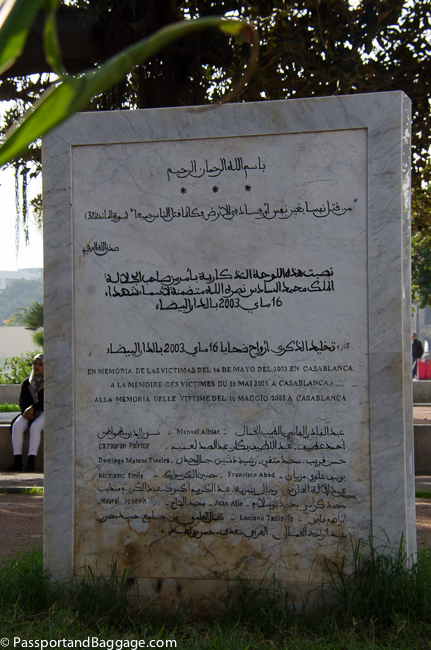
A plaque dedicated to the 2003 Casablanca bomb attacks These attacks were the deadliest terrorist attacks in the country’s history. Forty-five people were killed (33 victims and 12 suicide bombers). The suicide bombers came from the shanty towns of Sidi Moumen, a poor suburb of Casablanca.
Muhammad V Square had been occupied by barracks of the French colonial troops before the plan of Henri Prost and Joseph Marrast established it as a large square in 1916. It became the heart of the expanding European city. At the time, it was named Lyautey Square, in honor of France’s first Resident-General in Morocco.
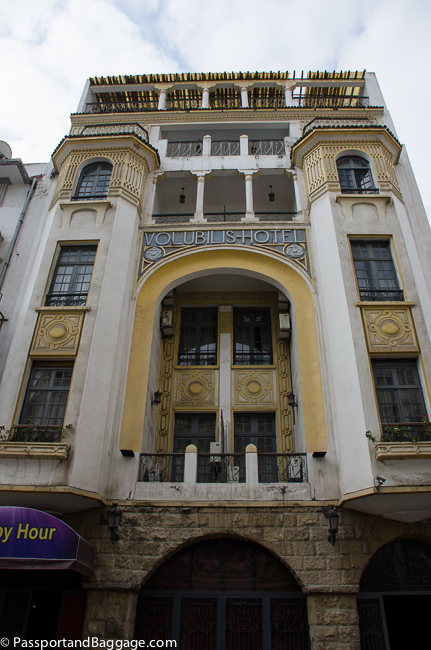 General Lyautey’s nouvelle Casablanca brought about an architectural style known as Mauresque, which blended traditional Moroccan designs with the more liberal influences of early-20th-century Europe. By the 1930s, Mauresque architecture began to reflect the Parisian Art Deco style.
General Lyautey’s nouvelle Casablanca brought about an architectural style known as Mauresque, which blended traditional Moroccan designs with the more liberal influences of early-20th-century Europe. By the 1930s, Mauresque architecture began to reflect the Parisian Art Deco style.
The buildings of this architecture can primarily be found in the blocks surrounding Muhammad V Square.
Here are just a few examples of some of these wonderful buildings:
Hassan II Mosque is the largest mosque in Africa and the 3rd largest in the world. Its minaret is the world’s second tallest minaret at 689 feet. It was designed by French Architect Michel Pinseau and built in 1993. It will hold a maximum of 105,000 worshippers; 25,000 inside the mosque hall and another 80,000 on the mosque’s outside ground.
Non-believers are allowed to visit the mosque on tours given hourly in all languages.
Some fun facts about Casablanca:
Mohammed V International Airport used to be a United States airbase. The base operated from 1951 to 1963, until the United States agreed to leave after American intervention in the Lebanon conflict of 1958.
The movie Casablanca was not filmed in the city, also, there were plenty of foreigners living in the city at the time because of the war, but there were far more Arabs living there than the filmed portrayed.
The city accounts for one-third of the entire country’s economy and over 50% of its industrial labor. It also has one of the highest GDPs in Africa.
Tourism is not a big item in Casablanca, it is truly the business and financial center of the country. So what you see here are the highlights of the town.
